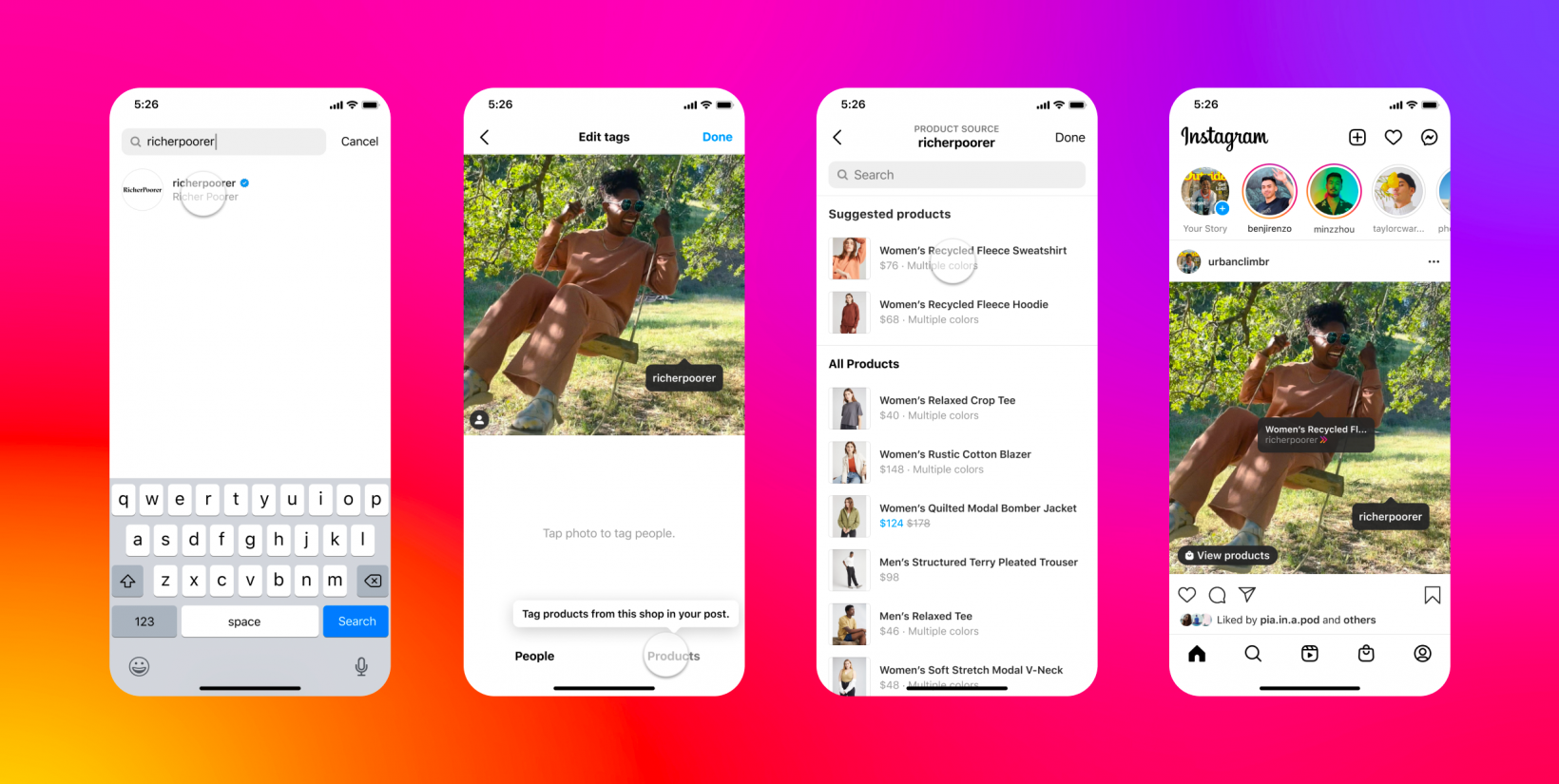Head of Instagram Adam Mosseri said the following about the ranking change: “If you create something from scratch, you should get more credit than if you are resharing something that you found from someone else. We’re going to do more to try and value original content more, particularly compared to reposted content.” In other words, you should probably stop sharing TikTok and Twitter posts from other people and come up with some ideas of your own, thank you very much.
We’ve added new ways to tag and improved ranking: – Product Tags– Enhanced Tags – Ranking for originality Creators are so important to the future of Instagram, and we want to make sure that they are successful and get all the credit they deserve. pic.twitter.com/PP7Qa10oJr — Adam Mosseri (@mosseri) April 20, 2022 The company has already taken steps to mitigate resharing. In 2021, the algorithm began to downrank reshared Reels with the TikTok logo. As my colleague Ivan wrote at the time, it was an unfair move for creators who might not want to go through the effort of recreating the same content for different social media platforms. It was also an ironic move considering Reels itself is very much a TikTok clone. Still, today’s announcement is likely for the best, considering how many Instagram accounts build clout off the work of others — often without credit. That said, it wasn’t clear from Mosseri’s message if the new algorithm tweak would further affect creators who are simply resharing their own content from other platforms. We’ve reached out to Instagram for clarification and will update this post if we hear back. Originality aside, the next of today’s updates include the ability for Instagrammers to tag specific products in their posts. Although product tags have been available for business for ages, the feature is now becoming widely available.
Creators won’t get paid for advertisements, but the tags could help brands they care about gain additional traction. You can read more about the feature on Instagram’s post here. Lastly, Instagram is rolling out enhanced people tags. This allows you to set a descriptive tag for yourself — examples included ‘photographer,’ ‘rapper,’ and ‘fashion stylist — which show up alongside your handle in image tags. These tags can be set in your Instagram profile settings. These changes are reflective of an Instagram that has shifted its focus away from being a social network for food and pet photos, to being a platform for capital-C Content. Reels have been incredibly successful for the platform, but that victory has been somewhat shallow. As reported by Recode in March, an analysis by the Integrity Institute earlier in this year showed that many of the most popular Reels (as well as the most popular posts on Facebook) were largely posted by accounts which simply reshare content: “The most common use for unoriginal content is to recycle memes, jokes, or questions that had previously gone viral on other platforms. We found content that was originally produced for Twitter, Reddit, Quora, and YouTube being reposted onto Facebook and gaining very broad distribution. In Q4, we get our first view into the Instagram Reels ecosystem, and how frequent unoriginal content is there. Overall, unoriginal content in Instagram Reels appears to be about as prevalent as in Facebook overall, and so there isn’t a significant shift from Q3 to Q4.” The decision to cut down on reshared content might hurt some accounts at first, but it’s likely crucial for the future of Reels. If Meta wants its social networks to thrive in the long run, they need to be more than the venue redistributing content from its competitors. But that’s always going to be a challenge when so many of Instagram and Facebook’s best features are simply copies of its competition as well.
